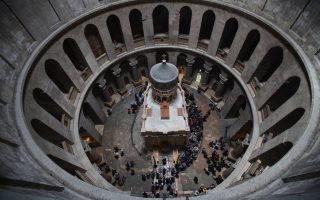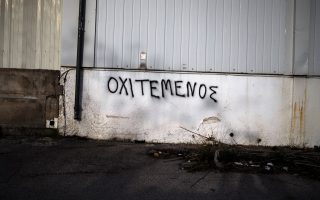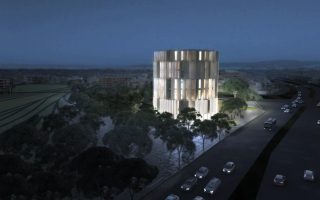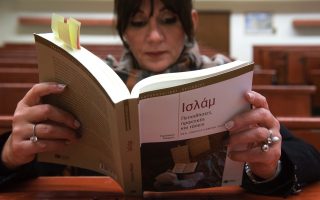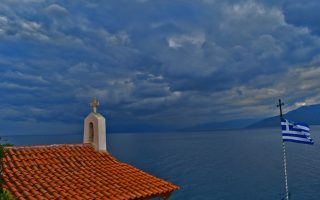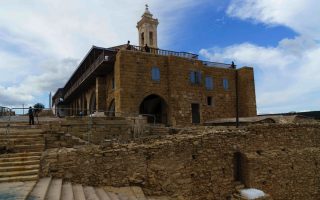Community reacts to Bayezid Mosque fire in northern Greece
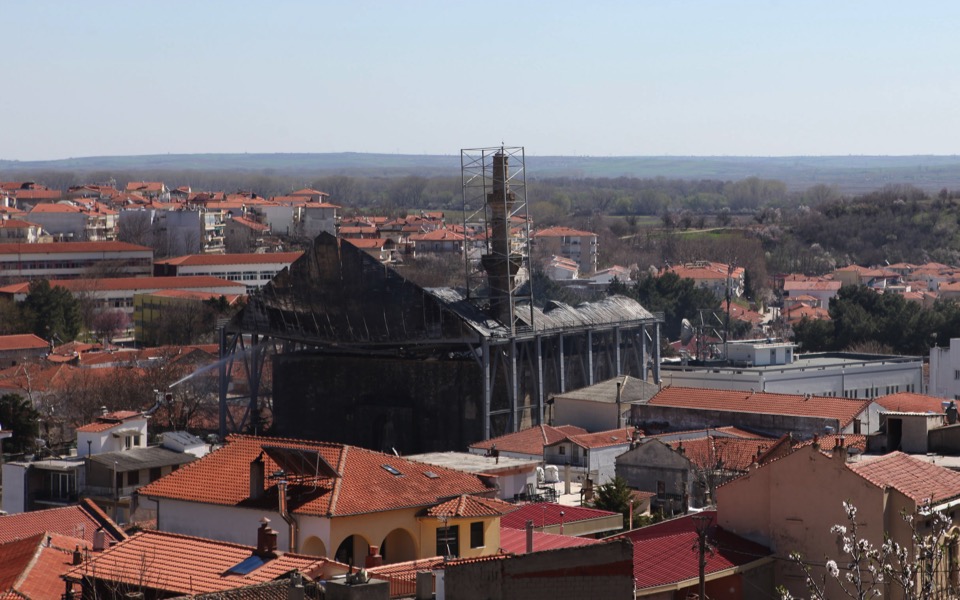
Restoration work on the historic Bayezid Mosque in Didymoteicho is expected to start soon. The mosque suffered serious damage in a catastrophic fire last Wednesday. Most members of the local community consider the Ottoman monument an important tourist attraction.
Hamzi Osman, a mufti who is the mosque’s caretaker, says there is a general sense of relief that this “painful incident,” as he describes it, hasn’t ignited intercommunal tensions. The truth is that the minds of many, upon hearing about the fire, went straight to Erdogan and how he might use it in the Turkish referendum campaign to fuel tensions between Greece and Turkey.
The Turkish response came in the form of a mild statement from the country’s Foreign Ministry, which stated that Ankara is awaiting the findings of an investigation by Greek authorities regarding the cause of the fire. It described the mosque as “one of the starkest examples of our shared cultural heritage with Greece.” The statement also repeated Turkey’s shared intent with Greece to mutually maintain cultural monuments which are important to both countries, as reflected in agreements signed by Athens and Ankara.
The response from the religious leadership and political party (DEB) of Greece’s Muslim minority was also calm. The vice president of DEB, Ozan Ahmetoglu, spoke to Kathimerini about the historic and religious importance of the mosque. He also expressed hope that repairs will happen quickly.
There were, however, those who quickly expressed objection to the restoration of the mosque. The Ministry of Culture had already begun renovations several years ago, but the work accelerated after 2011, when the project was approved for European Union funding under the National Strategic Reference Framework (ESPA). On May 23, 2016, members of the Muslim minority drafted a statement addressed to the mayor of Didymoteicho, then-culture minister Aristides Baltas and the International Council on Monuments and Sites (ICOMOS), warning that the restoration works “don’t conform to the procedures described in UNESCO’s rules on physical protection of historic monuments.”
The mosque of Sultan Mehmed Celebi was built in 1420 and covers 900 square meters. It is the oldest mosque in Europe. Aside from traditional Ottoman architecture, the mosque also has unique characteristics that make it the only one of its kind in the world.
The three inscriptions that can be seen in the entrance reflect the characteristics of Islamic calligraphy before the year 1500. These inscriptions are very important to the history of calligraphy and must be protected with great care.
The wooden ceiling was built using a technique seen in no other mosque either in the period of the Seljuk Turks or the Ottoman era. The carpentry reflected the uniqueness of the style. For these reasons, the wooden ceiling and the decorative elements must be repaired with the appropriate materials and the required knowledge.
Specialists with knowledge of the restoration process pointed out to Kathimerini the lack of oversight by engineers working on the project, although when asked about this by Kathimerini, the general secretary of the Culture Ministry, Maria Andreadaki Vlazaki, denied such claims. She also said that the site has never had to be guarded. As they await the final report from the fire service, members of the local community expressed concerns about the future of the monument, though nobody suspects sabotage.
“We were waiting for it to open for tourists. We are disappointed. The repairs must happen fast,” said Kostas, who owns a fast-food restaurant along the pedestrian walk. The majority of the residents of Didymoteicho regard the mosque as a major part of the town’s cultural identity. Along with the Byzantine walls, they hope it will bring money into the local economy. Not everyone thinks that way. Some believe its restoration will make the mosque a point of reference for Muslims around the world, something they don’t want.
Most of the Muslims in the area of Didymoteicho, who number around 5,000, are Roma. They don’t have any particular desire to see the mosque restored so that it can be used as a place of worship. “We don’t go to that mosque, it is only there for historic purposes. We have our own little one to pray at,” says Ibrahim Omerlou. As we approached Didymoteicho, our eyes were drawn to two structures. One was the Bayezid Mosque, which is now a black, burned-out carcass. The minaret looks as if it will fall at any moment. The other is a brand-new Christian Orthodox cathedral, well-kept and with a Greek flag on the front of it.
The monuments symbolize the two religious communities and can be seen from afar. As in other parts of Thrace, they give the impression that they “rise in one symbolic fight” as the two communities live together in harmony. After the mosque fire, the local metropolitan expressed sympathy with the Muslim community.
